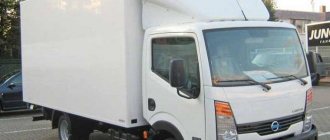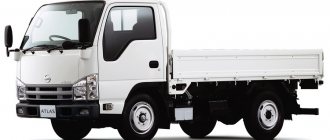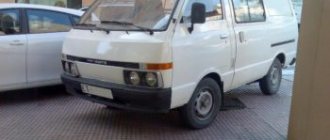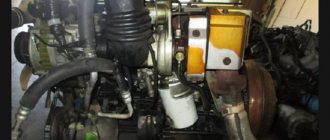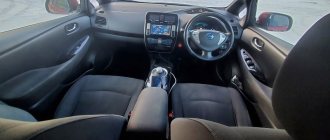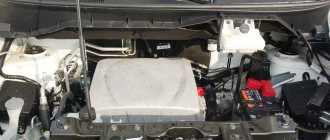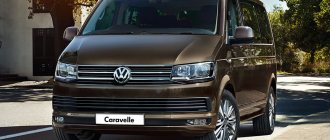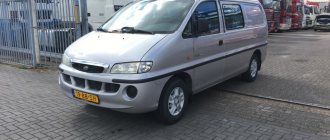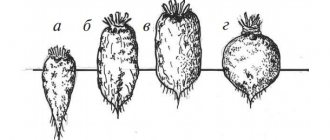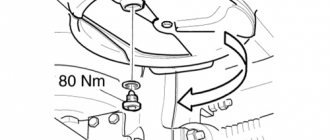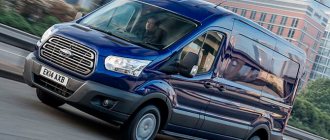Subscriptions can only be used by registered users of Drom.ru. Join us, we will be glad to see you!
You are looking at the Nissan Cabstar Reviews section.
2011, 2012, 2013, 2014, 2015, 2016, 2022, 2022, 2022, 2020 View all about
Nissan Cabstar
Detailed reviews of Nissan Cabstar car owners with photographs, disadvantages and all the cons!
The Nissan Cabstar is a light-duty commercial vehicle that has been in mass production since 2007. "Cabstar" is one of the few foreign trucks that are officially supplied to Russia. The car is also actively used in Western European countries under the name “Renault Maxity”. Despite the different names, they are the same car, just for different markets. What is Nissan Cabstar? Photos, technical specifications, owner reviews and other useful information are further in our article.
Design
Perhaps, “Cabstar” is the brightest and most beautiful truck in its class, according to trucking companies. Among the gray GAZelles, Favas and Photons, it immediately stands out for its extraordinary “smiling” appearance.
The first thing that catches your eye is the powerful lighting technology, which stretches across the entire body from the bumper almost to the windshield. Turn signals are integrated into the headlights. But there are no foglights here (although the manufacturer left plastic plugs). The chopped shapes of the cabin themselves also look unusual. According to the owners, due to its angularity and squareness, the car still looks modern.
The Renault Maxity has the same design, with the exception of the emblem on the radiator grille. A similar trend was observed among the French with the Citroen Jumper, which had the same design as the Fiat Ducato and Peugeot Boxer.
Cabin
The model is equipped with a large square cabin. According to fans, it has features of KAMAZ. The cabin differs from the domestic large-tonnage truck with a huge windshield and the original shape of the mirrors.
The front bumper has fog lights. The bumper itself fits very harmoniously into the overall picture. In addition to the decorative function, it plays an important role - ensuring safety. Inside it is a very strong beam, as well as a special mechanism that will absorb all the impact energy in an accident.
The doors have the same beams. They will not allow you to get crushed in the event of the same accident. The rear bumper also has similar reinforcement.
In this truck, the cab is located directly above the power unit. To get to the engine, the cabin rises up and forward. Look at the Nissan Cabstar. The photo is in the article.
Salon
We immediately note the large glazing area. Owner reviews compare the Cabstar salon to an aquarium. But this is by no means a minus. After all, a large glass area is a plus for visibility. The driver sees all the blind spots, which is especially important in densely populated cities with heavy traffic.
Also, due to the angularity, the cabin is quite spacious - reviews note. Let's move on to the driver's workplace. It is designed simply, but with ergonomics in mind. The instrument panel contains all the necessary information, including an on-board computer that takes into account fuel consumption and other data. The steering wheel is two-spoke, with a comfortable grip. However, owner reviews note a small range of adjustments. Although the column is adjustable both in height and reach. Between the driver and passenger seats (by the way, it is double) there is a gear shift lever. It is located at a convenient distance from your hand. Even without experience driving commercial vehicles, you quickly get used to taxiing a Nissan, reviews note.
At the top of the windshield we can see the interior mirror. Quite a strange solution on a truck, especially with a van body. However, on flatbed models you can view the rear. The wall has two windows. By the way, the left passenger does not have a headrest on the backrest. This was done for a better view through the mirror, which is also noted on the positive side by reviews from motorists.
The center console has all the necessary elements - a tachograph, a stove control unit and other buttons. A radio tape recorder can be installed in place of the plugs. The cabin has four spacious niches. Moreover, one of them serves as a visor for the instrument panel. Documentation in A4 format can easily fit here, which is quite convenient, according to car owners.
Cubic cab – comfort, safety and wide visibility
The maneuverability of Nissan Cabstar vehicles is ensured not only by the compact size and technical characteristics of the drive, but also thanks to the proprietary cabin with its huge windows.
The impressive size of the windshield opens up the widest possible viewing horizon. The side windows at the front in the lower part go down, thereby opening up visibility from the side, which is important in small turning areas and busy city streets.
The interior of the Nissan Cabstar is quite spacious and comfortable. The seats are individually heated and adjustable in all directions, the interior is lined with high-quality plastic with excellent sound insulation, the doors are equipped with power windows, and the mirrors are heated.
Thanks to its cubic shape, the interior is ergonomic and comfortable not only for the driver, but also for two passengers. The steering wheel can be adjusted both in height and reach. The gearshift lever in the Nissan Cabstar is located conveniently for the driver and at the same time does not in any way interfere with the passenger sitting in the middle.
In such light-duty trucks, the middle passenger seat is often a purely conventional place that allows a person to safely, but awkwardly, sit during a short trip. However, in the Nissan Cabstar, even the middle seat is comfortable and has sufficient legroom, providing a full-fledged place to comfortably accommodate a passenger during long trips.
The Nissan Cabstar interior has a large number of various shelves, niches, boxes and compartments for storing documents, tools and personal belongings. All machine controls are located directly at the driver’s fingertips. The dashboard in the Nissan Cabstar is designed in such a way that even in bright sunshine, all indicators will be clearly readable.
Additionally, safety is ensured by the front bumper, which has an original shock-proof mechanism based on a rigid beam. The system effectively absorbs impact energy during a collision. Similar protection is provided in the Nissan Cabstar and in the doors. Thanks to this, the driver, as well as his passengers, are additionally protected in case of an accident.
The configuration of Nissan Cabstar Comfort trucks suggests the possibility of installing a double cab on vehicles with a long wheelbase (3400 mm). This cabin can comfortably accommodate six people, including the driver. This modification of the Nissan Cabstar is the best option for repair and installation teams whose work involves a working group visiting the site and transporting the necessary equipment, tools, building materials, etc.
Among other differences between the Nissan Cabstar Comfort and the basic configuration:
- the presence of a dual-type heating fan in the rear part of the cabin;
- Large refrigerated compartment for storing personal food and drinks;
- heating/cooling cup holder;
- heated glove compartment;
- audio system;
- remote activation of the side mirror drive;
- The headlight units are equipped with halogen headlights, and turn signal indicators are installed on the side mirrors.
How does Nissan Cabstar behave on the go?
Owner reviews say that the car drives like a passenger car.
The seats are moderately hard and have several adjustments. However, there are also drawbacks to the interior of the Nissan Cabstar truck. Reviews note the low quality of sound insulation. At idle, the rumble of the diesel engine is clearly audible. Still, the Cabstar has echoes of a truck, despite its short wheelbase and belonging to category B.
Specifications
The engine range includes three diesel units. Since the Nissan Cabstar is a commercial truck, gasoline engines are not included in the list. In the photo below we see a thermal and noise insulation shield. However, its thickness is not enough to cope with all vibrations. The sounds still pass into the cabin.
In the basic version, the car is equipped with a 110-horsepower 2.5-liter 4-cylinder unit. Medium versions are equipped with a 130-horsepower engine with a similar displacement. The flagship for the Nissan Cabstar truck is a three-liter engine with Common Rail injection. The maximum power of the unit is 150 horsepower. All of the above engines have a 16-valve head and a chain gas distribution mechanism. They are equipped mainly with a five-speed manual transmission. On heavy modifications, a six-speed transmission is used.
Basic model overview
The truck with a short wheelbase of 2,500 and a single cab was the first to receive the name Nissan CABSTAR and was the main model for the entire line of subsequent modifications of this commercial vehicle.
Initially, it had an original appearance, which was easily recognizable in the flow of cars on the road. This model has a large, square cabin. It somewhat resembles the KamAZ cab.
It is distinguished from the Russian cargo truck by its impressively sized windshield, the original shape of the side windows in the doors and large front headlights stretched from top to bottom to the full height of the hood, which house all the lighting equipment needed in front, including turn signals.
Round-shaped fog lamps are located in the front bumper.
It fits quite harmoniously into the overall design and at the same time performs an important safety function, since it has a built-in durable beam and an original shockproof mechanism that absorbs impact energy in a collision.
The doors also have rigid beams of similar properties built into them, which prevent the structure from collapsing in the event of an accident. The rear bumper is also reinforced with a rigid beam.
The cabin is located above the engine. When it is lifted up and forward, free access to the internal combustion engine is provided, which makes it easier for the driver to maintain and repair it.
Find out the technical characteristics of the Ural-375 car from the article prepared for you.
In this review, you can study the main operating parameters of the Nissan Atlas truck.
The square shape of the cabin has significantly increased the interior space of the cabin. The driver and two passengers are free to sit in their seats when driving. The seats are comfortable and heated.
The driver's seat is adjustable in all necessary directions. The back of the middle seat folds forward to form a table, and behind this place there is additional storage where you can place many different items, including tools.
The gear shift knob is made and located taking into account the size of the cabin and fits into the interior without disturbing the people there.
The steering column is adjustable both in reach and height, which allows it to be adjusted to any height of the driver.
The doors have electric windows, and the side exterior mirrors are heated.
The cabin is completely finished in plastic with good sound insulation. The front panel with the instrument panel is made taking into account the laws of ergonomics. No obstacles prevent the driver from monitoring instruments and using buttons and switches.
An on-board computer with a display on the panel provides all the necessary information about the condition of the engine, components and systems of the vehicle, the dynamics of the trip and services. In the basic version, this model is produced as a chassis or truck with an onboard metal platform with a load capacity of 1,656 kg.
Main parameters of the CABSTAR car:
| Geometric dimensions of the machine | 4 746x1 870x2 110 mm |
| Track | 1,569 mm |
| Wheelbase | 2,500 mm |
| Front overhang | 1,063 mm |
| Rear overhang | 1,183 mm |
| Cabin angle | 45 degrees |
| Uphill angle | More than 30 degrees |
| Loading platform length | 3 174 mm |
| Fuel reserve | 90 liters |
| Permitted trailer weight with brakes | 3,500 kg |
| Permitted trailer weight without brakes | 750 kg |
| Front suspension | Independent |
| Rear suspension | Dependent |
| Brake system | Double-circuit hydraulic. The drive has ABS and a vacuum booster |
| Brakes | Disk |
| Wheels | Front single-slope R16, rear dual-slope R16 |
| Steering | Rack and pinion with hydraulic booster |
The basic Cabstar car in standard version today costs RUB 1,266,000.
Price
The starting price for the car is 1 million 450 thousand rubles. The flagship version of Kabstar is sold at a price of 1 million 600 thousand rubles. This package has everything you need: an airbag (front, for the driver), hydraulic booster, air conditioning, electric mirrors and windows, ABS and exchange rate stabilization. The on-board computer and power steering are already included in the basic version.
As for the secondary market, a used Nissan Cabstar can be purchased at a price of 740-850 thousand rubles. These will be cars from 10-11 years of production. Mileage - 150-200 thousand kilometers.
What do the owners say?
Among the advantages, owners note the high reliability of the car. At a mileage of 100 thousand, the car will only require replacement of consumables (oil and filter). Nissan Cabstar is equipped with the familiar ZD30 engine. Previously, it was installed on Patrol and Passenger SUVs. Because of this, it is not a problem to find spare parts. Nissan Cabstar is a very economical car. It has a good level of equipment (air conditioning, electrical accessories). Despite the diesel engine, it withstands Russian frosts well and starts without problems in the early morning. The cabin has a lot of niches, glove compartments, and cup holders. There are positive aspects for those who are forced to make repairs. Nissan Cabstar has spare parts similar to Renault Maxity. There will be no problems finding them. And it can break down after 120+ thousand kilometers. By this time, steering tips and silent blocks fail. The engine itself is very reliable and has a good service life.
Among the shortcomings are a noisy interior, a low location of the air filter (it’s better not to get into puddles 25 centimeters deep), and the lack of an autonomous heater in the maximum configuration. The engine takes a long time to warm up in winter and cools down quickly. In cold weather you cannot do without an autonomous heater. The price of a “hair dryer” with installation is from 40 thousand rubles.
We buy “Cabstar” on the secondary market
In view of the crisis situation, the question arises of purchasing vehicles either on lease or on the secondary market. The first option is not suitable for everyone. After all, it is very difficult to “recapture” one and a half million in a couple of years on such a machine. A safer option is to purchase second hand.
But how not to make a mistake in choosing? Let's consider a few main points:
- The first rule is to avoid cars that have been in an accident. And here we are not talking about the safety of the body or cabin. This can be repainted and puttied. But stretching the frame is much more difficult. If the car has been in a serious accident, it is clear that its frame is deformed. As a result, there is a discrepancy in the wheel camber angles, rubber burns, and subsequent deformation of the channels (cracks, etc.).
- Pay special attention to the engine. This is the main unit in the car. The engine should not emit soot or white smoke. The latter indicates deformation of the cylinder head. This happens due to overheating. Less often this indicates an overflowing nozzle. A common problem with Cabstars is a cracked muffler downpipe. This factory miscalculation has become a problem for many car owners. Often the pipe is repaired by welding the cracks.
- As for the gearbox, there may be problems with the clutch. This shows up better in a loaded car. On a burned disk it will twitch. While driving, try to engage all gears. The box should shift without crunching (worn synchronizers) and without significant effort.
- At idle speed it is normal to have unnecessary vibrations and sounds. Cabstar engines are equipped with the Common Rail system. It is very sensitive to fuel quality. Injectors are expensive to repair. Replacing four elements at a service station, including labor, costs about one hundred thousand rubles.
- Check suspension operation. When the car moves, it should smoothly handle bumps. The presence of extraneous noise in the front part of the cabin may indicate faulty ball joints, “tired” anti-roll bar cushions and tips.
- Beware of vehicles that are carrying serious overloads. Of course, there is no point in asking the seller about this. You can determine whether there have been overloads by looking at the condition of the tires. Thus, under increased loads, the inner part of the front tires suffers. The frame on Nissans is stronger than on GAZelles, but overloads are dangerous for others. The load is placed on the transmission elements, rear axle and suspension. The latter suffers significantly. And repairing it can cost several tens of thousands of rubles.
Features of buying a used copy
If the car is relatively new, and its history of operation by the first owner is transparent, the inspection before purchase is reduced to a minimum - you simply should not overlook any defect from an accident.
It’s bad if the car has already been seriously damaged in a serious accident - we don’t recommend buying such a vehicle with a deformed frame. Therefore, waves, humps and cracks on the side members are a signal to reject this option. An indirect sign of a past accident can be the imprints of the body repair of the cabin. The repainting is revealed by the difference in the shine of the enamel; the layer of putty will be “felt” by a magnet wrapped in a rag. Take away the door seals - there may be clearly non-factory welds there.
Secret problems with the gearbox or engine can be the result of primitive negligence of a “disposable” driver - category B cars are sometimes driven by just anyone - when something urgently needs to be transported, and the professional assigned to this car is sick or on vacation.
“Arson” of the clutch disc, “milling” of gearbox clutch splines, engine overheating - all this can be identified by undergoing diagnostics in a well-equipped company service center or simply by calling an experienced specialist for help.
The color of the exhaust from a warm engine can tell a lot. White smoke is a symptom of a “pouring” injector: the Common Rail system is sensitive to low-quality fuel, and replacing its elements costs a pretty penny. A replacement with all four injectors working will cost almost a hundred thousand rubles, so this is the discount the seller is obliged to give you.
After driving over potholes, you will certainly hear extraneous noises from below - especially when the wheel suddenly falls into a hole. This means that the front suspension ball joints, cushion or stabilizer link need to be replaced. Even if the defect is inexpensive to fix, it is obvious - the seller is unlikely to be stubborn in bargaining.
If the car was driven on bad roads at an unacceptably high speed or was overloaded, early failure of not only the running gear consumables, but also the most expensive components and parts - from the engine to the frame - is more than possible. An obvious sign of regular driving with overload is the visible wear of the inner edges of the front wheel tire treads.
Nissan Cabstar
According to the analytical agency Autostat (see table), there are only about a thousand of these machines in the all-Russian fleet, which is obviously less than their actual number. After all, most Nissan Cabstar cars are equipped with special bodies (manufactured goods vans, refrigerators) or special superstructures like aerial platforms, and according to old Soviet rules, their manufacturers change the brand of the car to their own. As a result, many of the cars imported by the importer with a globally recognizable emblem disappear without a trace in the vastness of one sixth of the land and are documented to be reborn under brands known only to a narrow circle of specialists. For example, "MPZ", "Technopolis" or "Mosdesignmash". And the base chassis appears in the PTS only in the “Special Notes” column, so their models are not reflected in the statistics. There are also objective reasons for the modest size of the Nissan Cabstar fleet. Firstly, this light-duty vehicle occupies a rather narrow niche in the overall structure of demand.
The total weight of the vehicle is 3.5 tons, and the most popular modifications in this class with all-metal vans are not provided. Secondly, the minimum price of a new car is 1.2 million rubles, which is a third higher than, for example, a FIAT Ducato of equal payload capacity, so a buyer who does not delve into the technical details often makes a choice not in favor of the “Japanese”. And thirdly, in the Asian part of Russia, instead of used Cabstar cars, they buy and register similar Nissan Atlas cars from the domestic Japanese market. There are many more of these right-hand drive cars in Russia than European-assembled ones. Nevertheless, finding a sufficiently fresh left-hand drive Cabstar will not be difficult.
Modifications
Nissan Cabstar is the export name for the Atlas family of light trucks with a cabover layout, which dates back to 1973. Structurally, it is a frame chassis with a longitudinally mounted power unit, a 5-speed manual gearbox, a banjo-type rear axle on springs and an independent front suspension with wishbones and longitudinal torsion bars. That is, a typical “pickup” design, like that of its closest relative - the Nissan NP300. Until 1984, the company exported its light-duty trucks from Japan to all continents under the name Datsun Cabstar (remember, this brand was “put on the shelf” until better times in 1986), and according to the in-plant nomenclature, the model was called F22. In 1992, it was replaced by the F23 - the main difference in the exterior was rectangular block headlights instead of four round ones. Then there were 14 years of minor upgrades, until finally, in 2006, the company introduced the modern F24 model with large, vertically elongated headlights. During this time, many fateful changes occurred in the history of Nissan Motors itself, in particular, the Nivisa plant in the Spanish town of Avila near Madrid became the main non-Japanese manufacturer of Cabstar trucks. Nissan acquired this enterprise back in 1987 from the local company Ebro, which produced small-tonnage semi-hooded vehicles with a monocoque body.
The Japanese, having renamed the entire family of trucks Nissan Trade, continued to assemble them in Avila for another good 17 years - until 2004. But in 1998, having decided that there were enough all-metal vans on the European market without them, they organized parallel production of light-duty vans on their own platform - much more durable and durable frame cabovers of the Atlas Cabstar family. A number of adaptive changes were made to the F23 design, creating an independent, purely European TLO model. The Asian front suspension on longitudinal torsion bars with an almost linear elasticity characteristic did not behave the best during temperamental driving along the Apennine and Pyrenean serpentines. With the new one - on a transverse double-leaf spring with a progressive characteristic - the Cabstar has become much better on the road. A different range of engines, different configurations, and no oriental exotics like tiny 12-inch wheels on the rear axle, fashionable on city trucks in Japan itself. There were also differences from purebred Japanese cars in the design of the cabin - if the Asian version of the F23, having undergone restyling, looked at the world with slanted eyes, then the European version (it was called Cabstar E) remained with rectangular headlights until the model was changed. The majority of used cars in the European part of Russia are Spanish TLOs, 6–12 years old, and they are mainly represented in our secondary market. The TLO model, like the F23, was not officially delivered to Russia.
Story
Reviews from owners of Nissan x-trail from 2.5 l., CVT with photo
The Japanese manufacturer Nissan began producing the first commercial trucks back in 1939. In the company, this segment consisted only of vans and buses.
The Cabstar name was used in two vehicle lines, namely pickup trucks and light commercial trucks, assembled by UD Nissan Diesel, Volvo AB and the Renault-Nissan Alliance for the European market.
The name itself appeared back in 1968, when models were produced as Datsun. It was officially assigned to the Nissan brand only in the early 1980s, and at the same time the updated Nissan Cabstar light trucks entered the European market.
But this truck was not a completely independent model. So, in 2007, the manufacturer introduced a new generation, which received significant changes in design. However, the appearance almost completely copies the French model Renault Maxity.
For the domestic Japanese market, the same truck is produced under the names Nissan Atlas and Mitsubishi Canter Guts. Moreover, none of the models has significant differences. They are mainly distinguished by radiator grilles and branded emblems.
It would seem that the Nissan Cabstar should be produced in Japanese factories, and the Renault Maxity, respectively, in French ones. But as a result of the globalization of production, both cars are produced in Spain, at the Nissan Motor Iberica plant.
Considering all this, the new Nissan Cabstar can hardly be called a Japanese development, since the truck has become almost entirely European. The only thing it has in common with the brand is the logo on the hood.
The presence of a tail lift, if you need it, is a big plus of a used car.
In 2004, the European Cabstar was slightly updated: the letter E was removed from the designation, a new radiator grille with four windows was installed instead of three, the range of engines and gearbox were changed - a hatch for installing a PTO appeared. The list of modifications includes versions with a wheelbase of three options: 2500, 2900 and 3400 mm, and a total weight of five options: 2800, 3200, 3400, 3500 and 4500 kg. The last two belong to the heavy series with gable rear wheels. Light series vehicles come only with single-row three-seater cabs, while 3.5- and 4.5-ton vehicles come with both single-row and double four-door cabs with 6 seats. The latter is not available with the shortest wheelbase.
Medium-duty trucks (2-4 tons)
H40 (Atlas 200/300, 1981—1992)
Atlas 300
Production of the H40 trucks began in December 1981, replacing the heavy Nissan Caball and Nissan Clipper. In May 1985, Atlas production began in India. In 1986, the front grille was changed. In 1988, the white grilles were replaced with black ones. In June 1990, the NA20 began to be installed instead of Z20 gasoline engines.
Australia is an important market for the Atlas, where it also replaced the Nissan Caball, which was sold there from 1970 to 1981. In Australia, the Nissan Cabstar was sold from 1984 to 1992 and was assembled from local components.
Second generation, H41 (Atlas 200/300, 1991—1995)
Atlas 200 second generation
Since October 1991, the H41 began production, with engines FD46, FD42, BD30. In January 1992, the cabin model changed.
Third generation, H42 (Atlas 20/30, 1995—2007)
Since June 1995, the H42 model began to be produced. On November 26, 1998, Atlas MAX appeared. On May 13, 1999, changes were made to the trim and to the front grille. In 1998, emissions levels for turbocharged engines of 4.8 and 5.2 liters were brought into compliance with standards. On December 20, 1999, the truck began to be equipped with a 3.1-liter 4JG2 and a 4.6-liter 4HG1 engine. The truck now has independent front suspension. On October 23, 2000, the 4HG1 engine began to be installed. On January 31, 2001, a car with a carrying capacity of 3 tons appeared. On June 12, 2002, design changes to the front grille took place. On June 9, 2004, the cabin design changed significantly in relation to the safety standards for instrument lighting. On May 10, 2005, the truck began to be equipped with a 4.6-liter engine with a multipoint fuel injection system.
The capacity of the truck is 3, 6 or 7 people, depending on the cab (two- or four-door). Transmission 4-speed Automatic transmission, 5 speed or 6-st. Manual transmission. Drive system - front-wheel or all-wheel drive. Dimensions: length 4680/6770 mm, width 1695/2180 mm, height 1695/2375 mm, wheelbase 2475/3815 mm. The following engines were installed on the F23:
- 3.1 liter 4JG2
- 4.3-liter 4HF1/4HF1N
- 4.6 liter 4HG1
- 4.6 liter 4HV1
- 4.8 liter 4HL1N/4HL1-TC
- 5-liter 4HJ1/4HJ1N
- 5.2 liter 4HK1-T
Atlas H43
Atlas H44
Fourth generation, H43 (2007—2012)
The H43 went into production on January 30, 2007. In 2011, there were some changes in diesel engines regarding fuel economy and increased power on turbocharged engines. 2012 also saw changes to comply with 2010 emissions and safety standards. The H43's payload ranged from 1.65 to 4.5 tons and was powered by 3-liter or 5.2-liter diesel engines. In Japan, the H43 was sold in the same way as the UD Condor.
The capacity of the truck is 3, 6 or 7 people, depending on the cab (two- or four-door). Transmission 5-speed or 6-st. Manual transmission. Drive system - front-wheel or all-wheel drive. Dimensions: length 4685/6840 mm, width 1695/2180 mm, height 1970/2550 mm, wheelbase 2475/3865 mm. Diesel engines were installed on the F23:
- 3-liter 4JJ1-TCS
- 4.6 liter 4HV1
- 5.2 liter 4HK-1-TCN
Fifth generation, H44 (since 2013)
On November 8, 2012 it became known about the start of production of a new model. Sales started on January 8, 2013. The truck is equipped with a 3-liter 4P10 diesel engine, with low fuel consumption and high environmental performance. Transmission 5-speed mechanics and 6-speed machine.
The capacity of the truck is 3, 6 or 7 people, depending on the cab (two- or four-door). The F23 is equipped with two 3-liter engines 4P10(T2) and 4P10(T4). Transmission 6-speed Automatic or 5 speed Manual transmission. Drive system - front-wheel or all-wheel drive. Dimensions: length 4690/6870 mm, width 1695/2220 mm, height 1990/2570 mm, wheelbase 2500/3850 mm. Vehicle weight 2170-3150 kg.
Atlas MAX 1.5 t
